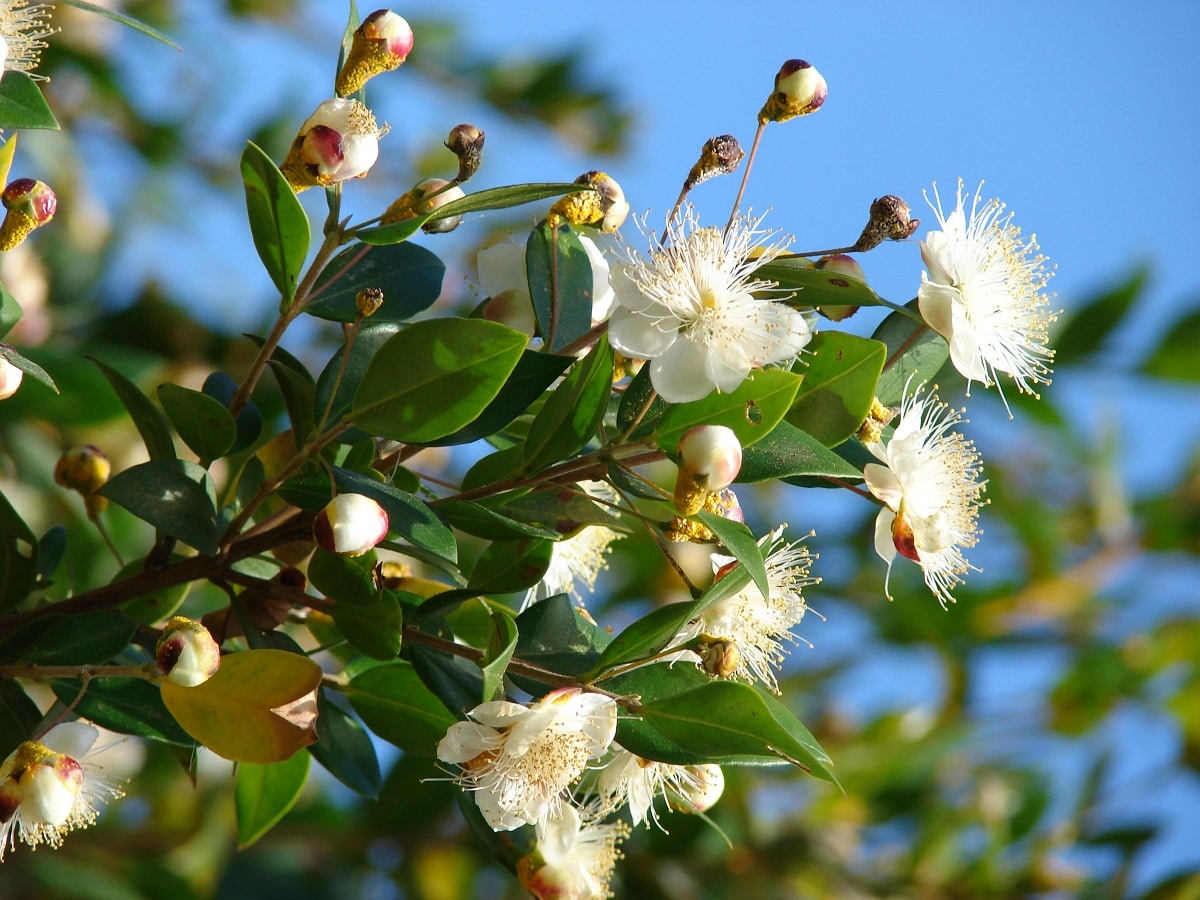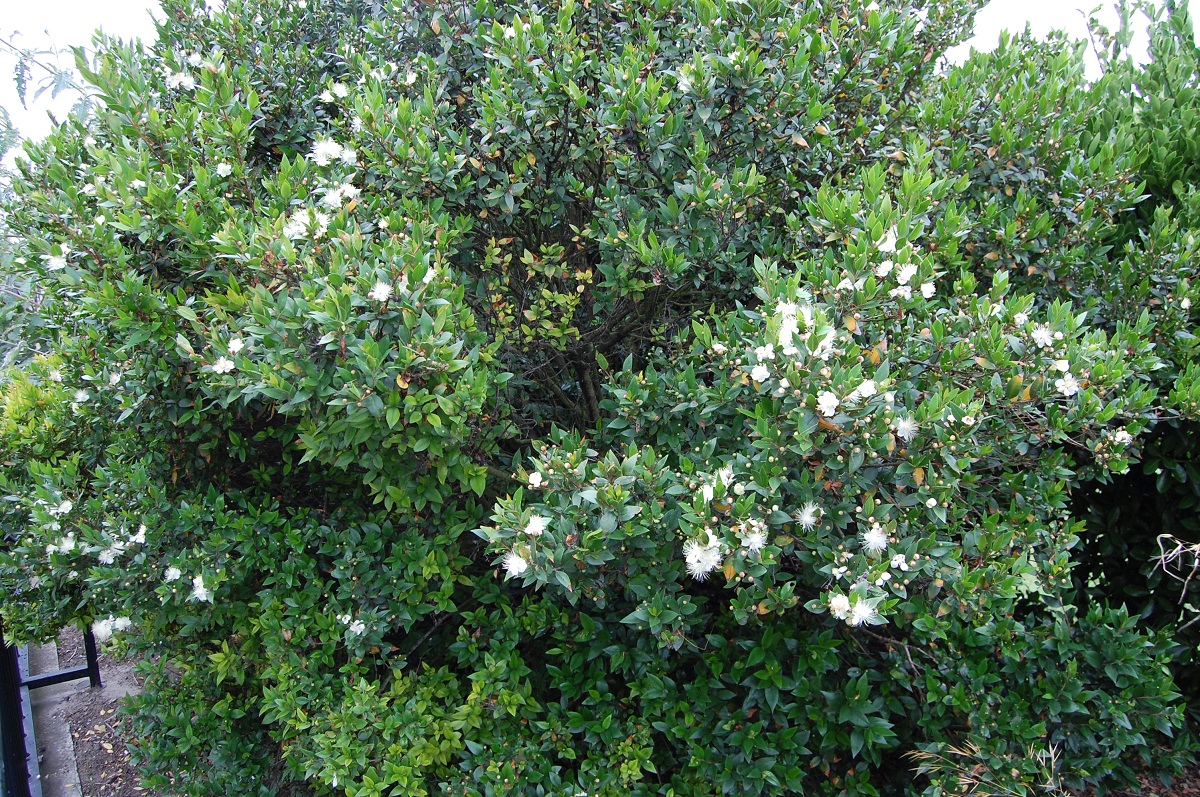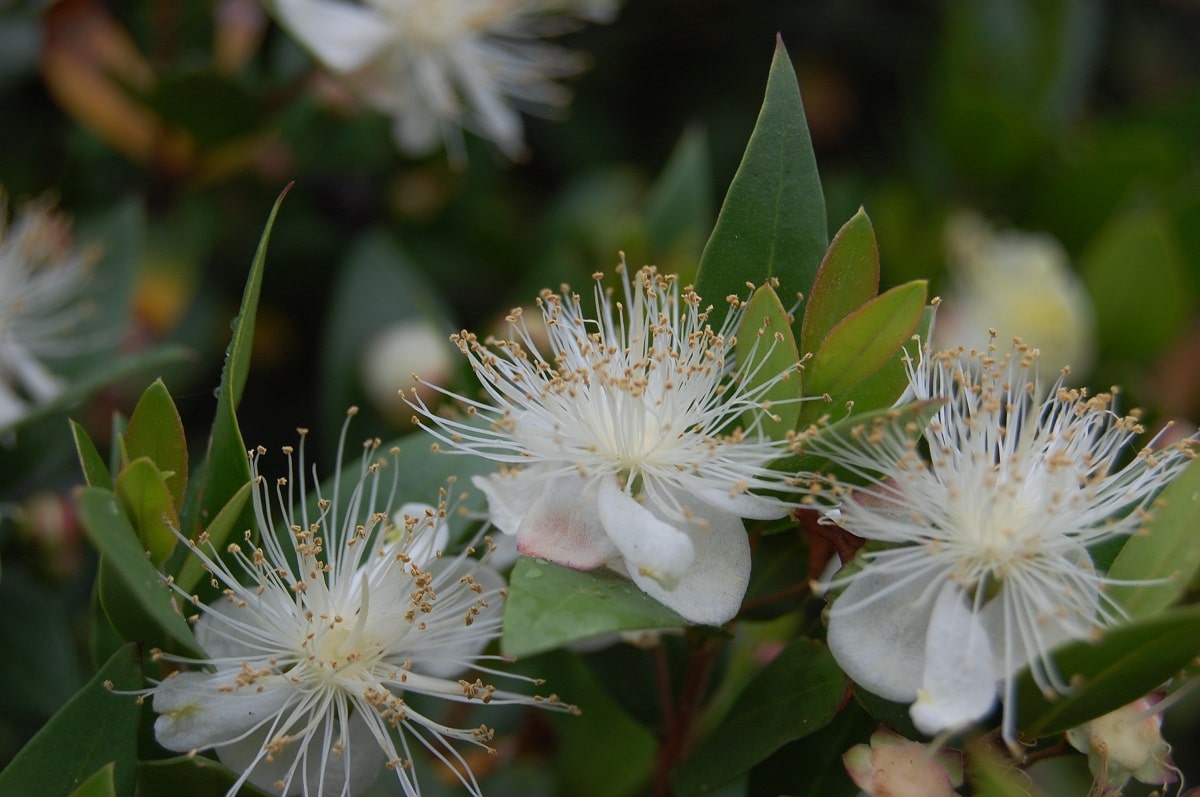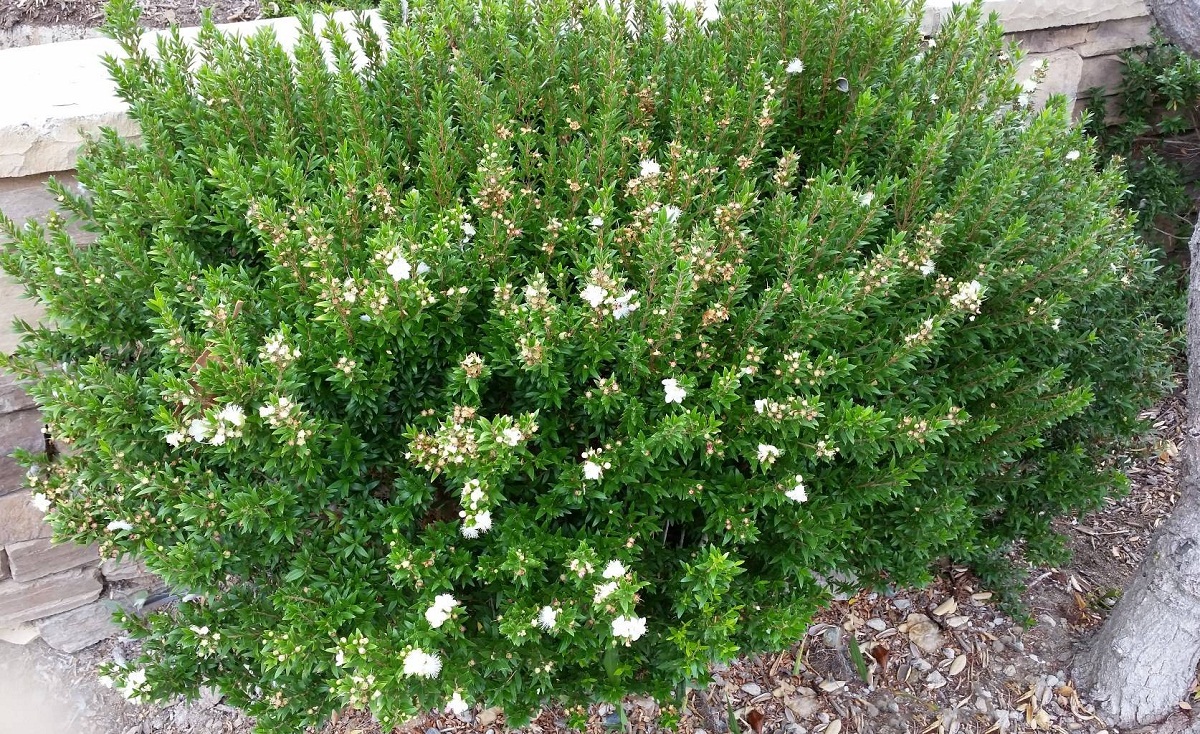
El myrtle common. Our beloved and easy-care myrtle. It is one of those plants that you put in your garden one day, you water it for a year, and from the second you can space the waterings since it will not need so much water.
It is very aromatic. To check it, it will be enough that we pass our hand through its leaves, or that we cut one. Plus, its fruits are edible. In short, it is one of those plants that are for everyone.
Myrtle characteristics

When we refer to myrtle common, we are talking precisely about the well-known myrtle, which we usually find in many gardens in our region. This has to do with the fact that it is a plant native to the entire European territory, the region of origin also extending to the north of the African continent.
Due to its durability, it is characterized as a perennial plant and can grow into a bushy shrub that will approach four meters in height.
From its stems, dense ramifications are usually detached, which during its adult stage will make it look like an immense crown that it will cover a good perimeter around it in shade.
One of the most particular characteristics is the intense aroma that its leaves give off, which are shiny and lanceolate. They can measure up to four centimeters in length, are smooth to the touch and show an intense green color, which lightens somewhat on the underside, where it shows the ribs.
This fragrance from its leaves is very pleasant and one of the fundamental factors that make this plant one of the favorites in Europe to use for ornamental purposes. This preference is completed by the varieties of colors and aromas that its flowers also provide.
We will begin to see the myrtle flowers during the last part of autumn and in addition to a very attractive fragrance, They have a whitish color that generate a very particular color contrast with their leaves. They are formed by five petals and are characterized by having some particular stamens.
If you ever had murtón liquor, you have been able to enjoy the flavor of its fruit, which is a berry that can be consumed and depending on the plant it can have different colors, being green at the beginning of its development, going through blue tones, until it reaches completely dark tones or a deep purple.
From
This is a type of shrub that has its origins mainly in both North Africa and southern Europe, being well known in all ages of history and widely used for its different types of properties since ancient times.
Although it is not specifically the Arab lands that see the origins of this shrub, its name comes from this language and refers to its fragrance, which can be particularly translated as "aromatic".
There are records of the use due to its different properties since Ancient Greece, when the fruit of this bush was associated with certain aphrodisiac attributes, to the power of fertility and other duties associated with fidelity.
A fruit that was also taken into account in Greek mythology and that later, Christianity would also adopt, with meanings similar to those given in ancient Greece, but only those related to fidelity and also using it as a synonym for purity or virginity.
Caring for the myrtle common

All the areas in which the cultivars originated and are developed in the best possible way. myrtle common are areas where climates are stable, that is, in those places where there are no sudden variations in temperature, but where there are small and smooth variations.
The myrtle or myrtle is an evergreen shrub with edible fruits that grows up to three meters in height, although if you don't want it to grow that much, you can prune it without problems in early spring. It looks great in gardens, either as hedges, as more or less isolated specimens, or together with other aromatic plants, such as lavender.
In order for it to grow well, it is necessary that is located in an area where the climate is mild, with low intensity frosts (down to -4ºC). In the case that it is colder, it is highly recommended to have it in a pot to be able to bring it into the house when the temperatures begin to drop.
Place your myrtle common in a corner of the garden or patio that is bright. It does not need to be in direct sunlight. You also don't have to worry about the soil, as it is not demanding as long as it has good drainage. Of course, if you have it in a pot, use a porous substrate, like black peat mixed with perlite or clay balls in equal parts.
It is a plant that does not require constant watering to maintain its appearance and shine. In times when temperatures are lower, watering them once a week will be enough to develop perfectly and it will be necessary to intensify this irrigation during the summer months, in which it will be convenient to water two, three and even four times a week.
If you have it planted in the ground, during the first year or if it is in a pot you have to water it every three days in summer, and every week the rest of the year. From the second, and only if it is planted in the ground, it can be watered every 5 days in summer if the temperature does not stay high (above 30ºC) for many days in a row and if the drought is not extreme. Take the opportunity to pay it monthly with fertilizers rich in iron.
Management
There are many areas of the world in which myrtle has been prohibited from being planted, as a result of some diseases that a vector mosquito can generate which is scientifically called, Citri diapohorin.
This mosquito usually carries a disease that is usually called by the acronym HLB, and it is bacteria that will lodge in different plants, affecting them mainly in the change of coloration and deterioration of their fruits, or in a lower production of these citrus trees such as orange, lemon and mandarin, among others.
Initially, this disease was detected in citrus crops in tropical Asia, where it has spread significantly. Outside of this continent, it has been registered in Brazil, since the late 90s, and in North America, approximately since 2010.
Pests
All the pests that can be housed in the various plants in our garden can also affect the myrtle, so We must take certain precautions to generate protection for these types of plants.
Among the pests that could affect their ornamental beauty and even damage them on a larger scale, are for example mealybugs and red spiders. These pests do not usually affect the plant during its time of greatest activity, but rather they do it in the process of hibernation.
Uses

As we mentioned before, the myrtle plant has a number of uses dating back to ancient times. In principle, it is a plant widely used in all types of gardens in Europe and this has to do with its ornamental beauty, which will add a color and a special shape to your garden.
But without a doubt, one of the best uses comes from the incredible aroma of both its flowers and its leaves, which are extracted to be used for different aromatherapy treatments, and even to make fragrances for environments and perfumes of all kinds.
But myrtle also has uses within the world of medicine and this has to do with the oils in its leaves, which provide significant relief for the respiratory tract of people, when they encounter a bronchial or lung problem.
That is why she is related to eucalyptus, since it is also often used in steam therapies to heal respiratory problems, providing a decongestant effect generated by tannins, mirtol and eucalyptol, among other components.
Do you have myrtle in your garden or patio?
Good morning, 10 months ago I planted a purple myrtle, it was 50 centimeters and now it is 1.8 meters. This growth rate is normal, or it should be higher. I have doubts about some chocolate plants that I have planted at the foot of the tree and it is not only roots that affect the tree.
Hello Mauricio.
Yes it's normal. 🙂
It is seen that it has everything you need.
A greeting.
Good morning, I have noticed that the myrtle that I have in the garden, appears with closed leaves. It is the rainy season here so it would be strange if there was a lack of water. I haven't noticed anything weirder, except that. Any idea what it might be? Thanks in advance.
Hello Victor.
It may be that it reacts like this to the rains; a way to try to protect yourself from them.
The myrtle is a plant that is not used to receiving so much water; in fact, it resists drought better than waterlogging.
I recommend putting a plastic on it - make some small holes in the sides so that the air can circulate - as a greenhouse.
A greeting.
They gave me a myrtle and I would like to know how to take care of it. I live in Bogotá Temperature in the day up to 20 ° C and at night it can drop to 8 ° C. I have a balcony in which there is a lot of seeing because the mountain is in front of it. Can I leave it out How often do I pour water on it? It comes in a small pot. Should I change it?
Thank you
Hello Maria Paula.
Myrtle resists cold and weak frosts without problems, so you do not have to worry about the cold in your area 🙂
You can (and should) have it outside, but in an area where it is not too windy.
Yes, change it to a bigger pot, so it can keep growing; and water it 2-3 times a week in summer and less the rest of the year.
Regards!